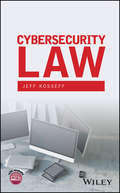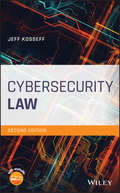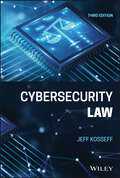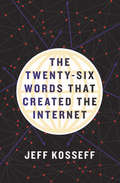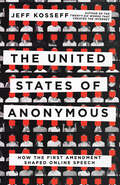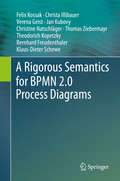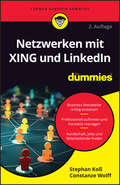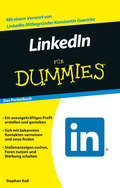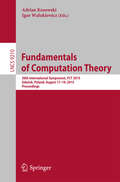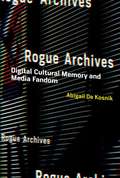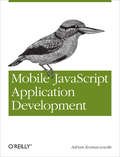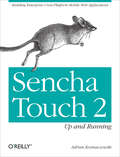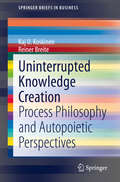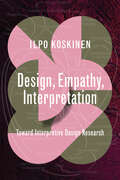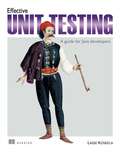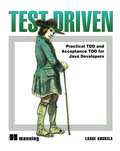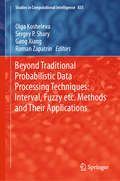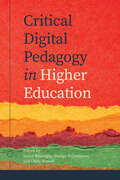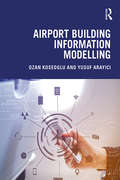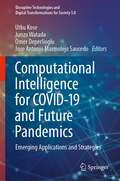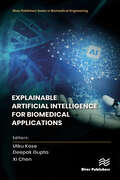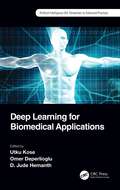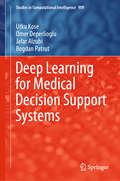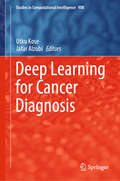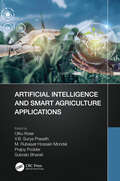- Table View
- List View
Cybersecurity Law
by Jeff KosseffA definitive guide to cybersecurity law Expanding on the author’s experience as a cybersecurity lawyer and law professor, Cybersecurity Law is the definitive guide to cybersecurity law, with an in-depth analysis of U.S. and international laws that apply to data security, data breaches, sensitive information safeguarding, law enforcement surveillance, cybercriminal combat, privacy, and many other cybersecurity issues. Written in an accessible manner, the book provides real-world examples and case studies to help readers understand the practical applications of the presented material. The book begins by outlining the legal requirements for data security, which synthesizes the Federal Trade Commission’s cybersecurity cases in order to provide the background of the FTC’s views on data security. The book also examines data security requirements imposed by a growing number of state legislatures and private litigation arising from data breaches. Anti-hacking laws, such as the federal Computer Fraud and Abuse Act, Economic Espionage Act, and the Digital Millennium Copyright Act, and how companies are able to fight cybercriminals while ensuring compliance with the U.S. Constitution and statutes are discussed thoroughly. Featuring an overview of the laws that allow coordination between the public and private sectors as well as the tools that regulators have developed to allow a limited amount of collaboration, this book also: • Addresses current U.S. and international laws, regulations, and court opinions that define the field of cybersecurity including the security of sensitive information, such as financial data and health information • Discusses the cybersecurity requirements of the largest U.S. trading partners in Europe, Asia, and Latin America, and specifically addresses how these requirements are similar to (and differ from) those in the U.S. • Provides a compilation of many of the most important cybersecurity statutes and regulations • Emphasizes the compliance obligations of companies with in-depth analysis of crucial U.S. and international laws that apply to cybersecurity issues • Examines government surveillance laws and privacy laws that affect cybersecurity as well as each of the data breach notification laws in 47 states and the District of Columbia • Includes numerous case studies and examples throughout to aid in classroom use and to help readers better understand the presented material • Supplemented with a companion website that features in-class discussion questions and timely and recent updates on recent legislative developments as well as information on interesting cases on relevant and significant topics Cybersecurity Law is appropriate as a textbook for undergraduate and graduate-level courses in cybersecurity, cybersecurity law, cyber operations, management-oriented information technology (IT), and computer science. This book is also an ideal reference for lawyers, IT professionals, government personnel, business managers, IT management personnel, auditors, and cybersecurity insurance providers. JEFF KOSSEFF is Assistant Professor of Cybersecurity Law at the United States Naval Academy in Annapolis, Maryland. He frequently speaks and writes about cybersecurity and was a journalist covering technology and politics at The Oregonian, a finalist for the Pulitzer Prize, and a recipient of the George Polk Award for national reporting.
Cybersecurity Law
by Jeff KosseffThe second edition of the definitive guide to cybersecurity law, updated to reflect recent legal developments The revised and updated second edition of Cybersecurity Law offers an authoritative guide to the key statutes, regulations, and court rulings that pertain to cybersecurity. Written by an experienced cybersecurity lawyer and law professor, the second edition includes new and expanded information that reflects the latest changes in laws and regulations. The book includes material on recent FTC data security consent decrees and data breach litigation. Topics covered reflect new laws, regulations, and court decisions that address financial sector cybersecurity, the law of war as applied to cyberspace, and recently updated guidance for public companies’ disclosure of cybersecurity risks. This important guide: Provides a new appendix, with 15 edited opinions covering a wide range of cybersecurity-related topics, for students learning via the caselaw method Includes new sections that cover topics such as: compelled access to encrypted devices, New York’s financial services cybersecurity regulations, South Carolina’s insurance sector cybersecurity law, the Internet of Things, bug bounty programs, the vulnerability equities process, international enforcement of computer hacking laws, the California Consumer Privacy Act, and the European Union’s Network and Information Security Directive Contains a new chapter on the critical topic of law of cyberwar Presents a comprehensive guide written by a noted expert on the topic Offers a companion Instructor-only website that features discussion questions for each chapter and suggested exam questions for each chapter Written for students and professionals of cybersecurity, cyber operations, management-oriented information technology (IT), and computer science, Cybersecurity Law, Second Edition is the up-to-date guide that covers the basic principles and the most recent information on cybersecurity laws and regulations. JEFF KOSSEFF is Assistant Professor of Cybersecurity Law at the United States Naval Academy in Annapolis, Maryland. He was a finalist for the Pulitzer Prize, and a recipient of the George Polk Award for national reporting.
Cybersecurity Law
by Jeff KosseffCYBERSECURITY LAW Learn to protect your clients with this definitive guide to cybersecurity law in this fully-updated third edition Cybersecurity is an essential facet of modern society, and as a result, the application of security measures that ensure the confidentiality, integrity, and availability of data is crucial. Cybersecurity can be used to protect assets of all kinds, including data, desktops, servers, buildings, and most importantly, humans. Understanding the ins and outs of the legal rules governing this important field is vital for any lawyer or other professionals looking to protect these interests. The thoroughly revised and updated Cybersecurity Law offers an authoritative guide to the key statutes, regulations, and court rulings that pertain to cybersecurity, reflecting the latest legal developments on the subject. This comprehensive text deals with all aspects of cybersecurity law, from data security and enforcement actions to anti-hacking laws, from surveillance and privacy laws to national and international cybersecurity law. New material in this latest edition includes many expanded sections, such as the addition of more recent FTC data security consent decrees, including Zoom, SkyMed, and InfoTrax. Readers of the third edition of Cybersecurity Law will also find: An all-new chapter focused on laws related to ransomware and the latest attacks that compromise the availability of data and systems New and updated sections on new data security laws in New York and Alabama, President Biden’s cybersecurity executive order, the Supreme Court’s first opinion interpreting the Computer Fraud and Abuse Act, American Bar Association guidance on law firm cybersecurity, Internet of Things cybersecurity laws and guidance, the Cybersecurity Maturity Model Certification, the NIST Privacy Framework, and more New cases that feature the latest findings in the constantly evolving cybersecurity law space An article by the author of this textbook, assessing the major gaps in U.S. cybersecurity law A companion website for instructors that features expanded case studies, discussion questions by chapter, and exam questions by chapter Cybersecurity Law is an ideal textbook for undergraduate and graduate level courses in cybersecurity, cyber operations, management-oriented information technology (IT), and computer science. It is also a useful reference for IT professionals, government personnel, business managers, auditors, cybersecurity insurance agents, and academics in these fields, as well as academic and corporate libraries that support these professions.
The Twenty-Six Words That Created the Internet
by Jeff Kosseff"No provider or user of an interactive computer service shall be treated as the publisher or speaker of any information provided by another information content provider."Did you know that these twenty-six words are responsible for much of America's multibillion-dollar online industry? What we can and cannot write, say, and do online is based on just one law—a law that protects online services from lawsuits based on user content. Jeff Kosseff exposes the workings of Section 230 of the Communications Decency Act, which has lived mostly in the shadows since its enshrinement in 1996. Because many segments of American society now exist largely online, Kosseff argues that we need to understand and pay attention to what Section 230 really means and how it affects what we like, share, and comment upon every day.The Twenty-Six Words That Created the Internet tells the story of the institutions that flourished as a result of this powerful statute. It introduces us to those who created the law, those who advocated for it, and those involved in some of the most prominent cases decided under the law. Kosseff assesses the law that has facilitated freedom of online speech, trolling, and much more. His keen eye for the law, combined with his background as an award-winning journalist, demystifies a statute that affects all our lives –for good and for ill. While Section 230 may be imperfect and in need of refinement, Kosseff maintains that it is necessary to foster free speech and innovation. For filings from many of the cases discussed in the book and updates about Section 230, visit jeffkosseff.com
The United States of Anonymous: How the First Amendment Shaped Online Speech
by Jeff KosseffIn The United States of Anonymous, Jeff Kosseff explores how the right to anonymity has shaped American values, politics, business, security, and discourse, particularly as technology has enabled people to separate their identities from their communications. Legal and political debates surrounding online privacy often focus on the Fourth Amendment's protection against unreasonable searches and seizures, overlooking the history and future of an equally powerful privacy right: the First Amendment's protection of anonymity. The United States of Anonymous features extensive and engaging interviews with people involved in the highest profile anonymity cases, as well as with those who have benefited from, and been harmed by, anonymous communications. Through these interviews, Kosseff explores how courts have protected anonymity for decades and, likewise, how law and technology have allowed individuals to control how much, if any, identifying information is associated with their communications. From blocking laws that prevent Ku Klux Klan members from wearing masks to restraining Alabama officials from forcing the NAACP to disclose its membership lists, and to refusing companies' requests to unmask online critics, courts have recognized that anonymity is a vital part of our free speech protections. The United States of Anonymous weighs the tradeoffs between the right to hide identity and the harms of anonymity, concluding that we must maintain a strong, if not absolute, right to anonymous speech.
A Rigorous Semantics for BPMN 2.0 Process Diagrams
by Felix Kossak Christa Illibauer Verena Geist Jan Kubovy Christine Natschläger Thomas Ziebermayr Theodorich Kopetzky Bernhard Freudenthaler Klaus-Dieter ScheweThis book provides the most complete formal specification of the semantics of the Business Process Model and Notation 2. 0 standard (BPMN) available to date, in a style that is easily understandable for a wide range of readers - not only for experts in formal methods, but e. g. also for developers of modeling tools, software architects, or graduate students specializing in business process management. BPMN - issued by the Object Management Group - is a widely used standard for business process modeling. However, major drawbacks of BPMN include its limited support for organizational modeling, its only implicit expression of modalities, and its lack of integrated user interaction and data modeling. Further, in many cases the syntactical and, in particular, semantic definitions of BPMN are inaccurate, incomplete or inconsistent. The book addresses concrete issues concerning the execution semantics of business processes and provides a formal definition of BPMN process diagrams, which can serve as a sound basis for further extensions, i. e. , in the form of horizontal refinements of the core language. To this end, the Abstract State Machine (ASMs) method is used to formalize the semantics of BPMN. ASMs have demonstrated their value in various domains, e. g. specifying the semantics of programming or modeling languages, verifying the specification of the Java Virtual Machine, or formalizing the ITIL change management process. This kind of improvement promotes more consistency in the interpretation of comprehensive models, as well as real exchangeability of models between different tools. In the outlook at the end of the book, the authors conclude with proposing extensions that address actor modeling (including an intuitive way to denote permissions and obligations), integration of user-centric views, a refined communication concept, and data integration.
Netzwerken mit XING und LinkedIn für Dummies (Für Dummies)
by Stephan Koß Constanze WolffDas Einmaleins des professionellen Netzwerkens Professionelles Netzwerken ist mehr als die Erstellung eines Profils bei XING und LinkedIn. Stephan Koß und Constanze Wolff helfen Ihnen, das Potenzial von XING und LinkedIn auszuschöpfen. Beginnend bei der Registrierung geben die beiden Ihnen Tipps zum Kontaktmanagement, erklären, wie Sie ein Unternehmensprofil anlegen, sich als Profi positionieren und spannende Inhalte oder Kontakte finden. So lernen Sie, wie Sie XING und LinkedIn wirkungsvoll für Ihre Zwecke nutzen – egal ob Sie selbstständig sind, im Marketing oder Vertrieb angestellt, einen Job suchen oder sich als Arbeitgeber präsentieren möchten. Sie erfahren Was professionelles Netzwerken ist Wie Sie ein Business-Profil aufbauen Wie Sie Kundschaft, Inhalte, Jobs oder Mitarbeitende finden Wie Sie sich als Profi positionieren
LinkedIn für Dummies (Für Dummies)
by Stephan KoßSie wollen LinkedIn nutzen, um - vielleicht sogar international - Kontakte zu knüpfen, Aufträge und Stellen oder Kunden zu finden und sich selbst oder Ihr Unternehmen professionell zu präsentieren? Der deutsche LinkedIn-Experte schlechthin, Stephan Koß, hilft Ihnen dabei. Angefangen bei der Profilerstellung über die Vernetzung mit Kunden und Kollegen bis zur professionellen Nutzung der Business Plattform erfahren Sie alles, was Sie wissen müssen, um LinkedIn schnell für Ihre eigenen Zwecke einzusetzen. Finden Sie heraus, welcher Nutzertyp Sie sind und was Sie von LinkedIn erwarten, beteiligen Sie sich in Gruppen und Foren und schreiben oder beantworten Sie Stellenangebote. Außerdem erhalten Sie einen Überblick über eventuelle Kosten zum Beispiel für Premium-Profile oder Werbung, sodass auch Sie in kürzester Zeit vom Anfänger und Einsteiger zum "LinkedInsider" werden.
Fundamentals of Computation Theory
by Adrian Kosowski Igor WalukiewiczThis book constitutes the refereed proceedings of the 20th International Symposium on Fundamentals of Computation Theory, FCT 2015, held in Gdańsk, Poland, in August 2015. The 27 revised full papers presented were carefully reviewed and selected from 60 submissions. The papers cover topics in three main areas: algorithms, formal methods, and emerging fields and are organized in topical sections on geometry, combinatorics, text algorithms; complexity and Boolean functions; languages; set algorithms, covering, and traversal; graph algorithms and networking applications; anonymity and indistinguishability; graphs, automata, and dynamics; and logic and games.
Rogue Archives: Digital Cultural Memory and Media Fandom
by Abigail De KosnikThe task of archiving was once entrusted only to museums, libraries, and other institutions that acted as repositories of culture in material form. But with the rise of digital networked media, a multitude of self-designated archivists -- fans, pirates, hackers -- have become practitioners of cultural preservation on the Internet. These nonprofessional archivists have democratized cultural memory, building freely accessible online archives of whatever content they consider suitable for digital preservation. In Rogue Archives, Abigail De Kosnik examines the practice of archiving in the transition from print to digital media, looking in particular at Internet fan fiction archives.De Kosnik explains that media users today regard all of mass culture as an archive, from which they can redeploy content for their own creations. Hence, "remix culture" and fan fiction are core genres of digital cultural production. De Kosnik explores, among other things, the anticanonical archiving styles of Internet preservationists; the volunteer labor of online archiving; how fan archives serve women and queer users as cultural resources; archivists' efforts to attract racially and sexually diverse content; and how digital archives adhere to the logics of performance more than the logics of print. She also considers the similarities and differences among free culture, free software, and fan communities, and uses digital humanities tools to quantify and visualize the size, user base, and rate of growth of several online fan archives.
Mobile JavaScript Application Development
by Adrian KosmaczewskiWhen developing apps for the latest smartphones, you're faced with several vexing questions. How many platforms do you need to accommodate? What level of support do mobile browsers provide? To help you address these and many other key issues, this guide provides a hands-on tour of the most powerful JavaScript frameworks available today. You'll build sample apps with jQuery Mobile, Sencha Touch, and PhoneGap to learn the unique advantages--and disadvantages--of each framework. From there, you can determine which one is best for your project. This book is ideal for web developers familiar with JavaScript, HTML, and CSS. Experience the simplicity of jQuery Mobile for building cross-browser applications Learn how Sencha Touch's architecture, widgets, and blazing-fast rendering engine makes it a good choice for enterprise software Use PhoneGap to package your web app into a native iOS, Android, or Windows Phone application Discover the impact of various HTML5 features on mobile app development Pick up JavaScript productivity tips as you delve into its object orientation, closures, and coding conventions Test and debug your app with a collection of tips, tricks, and tools
Sencha Touch 2 Up and Running: Building Enterprise Cross-Platform Mobile Web Applications
by Adrian KosmaczewskiLaunch into Sencha Touch 2 with this hands-on book, and quickly learn how to develop robust mobile web apps that look and behave like native applications. Using numerous code samples, author Adrian Kosmaczewski guides you every step of the way through this touchscreen-enabled JavaScript framework--from creating your first basic app to debugging, testing, and deploying a finished product. Learn how to craft user interfaces, build forms, and manage data, then deploy as either an HTML5 offline app or as a native app for Android, iOS, or Blackberry.Define classes and create instances with Sencha Touch's object-oriented abstraction Build user interfaces with the framework's extensive set of high-level components Develop apps that consume complex data, whether it's stored locally or on remote servers Organize your application code in a consistent, predictable, and maintainable way Use Sass stylesheets to craft a personalized look and feel for your app Debug, test, and document your app with WebKit Web Inspector, Jasmine, Siesta, and JSDuck Use the Sencha Architect UI designer and IDE to simplify complex project development
Uninterrupted Knowledge Creation: Process Philosophy and Autopoietic Perspectives (SpringerBriefs in Business)
by Kaj U. Koskinen Rainer BreiteA common charge leveled against the autopoietic perspective is that it does not explain change or, consequently, knowledge creation. This book demonstrates that knowledge creation is not always an ongoing process, as is claimed in many process philosophy and autopoietic research works. The author introduces the idea of recursivity, which represents the explanatory potential for uninterrupted knowledge creation and paves the way for interaction between process (e.g. production) and stability (e.g. structure). The book describes the nature and role of recursivity in detail, especially in terms of how a system’s structure and production become media for one another. The book also acknowledges the value of the systems perspective on organizations in management studies, but suggests a different approach to defining systems, one that includes autopoietic elements.
Design, Empathy, Interpretation: Toward Interpretive Design Research (Design Thinking, Design Theory)
by Ilpo KoskinenA new, empathic approach to design research, drawn from the informed experiences of a leading design research program in Finland.Design, Empathy, Interpretation tells the story of empathic design, a design research program at Aalto University in Helsinki, Finland, that has developed an interpretive approach to design over the past twenty years. As one of the leaders of the Helsinki group, Ilpo Koskinen draws on his own experiences to offer readers a general intellectual and professional history of design research, and argues for what he calls an interpretive approach. Design, Empathy, Interpretation shows how the group has created connections all across the globe, and how a seemingly soft approach to design research can be useful in both industry and government.Koskinen follows design research&’s transformation from questions of usability, in the 1980s, through to the revolution in personal electronics and the &“user-centered&” turn of the 1990s. Using the research community in Helsinki as a case study, and moving between specific projects and theoretical debates, he offers readers a focused introduction to the major methodological and intellectual challenges—as well as the opportunities—of design research. He argues that all design tasks, however simple or complex, begin with understanding the way humans ascribe meaning, both as individuals and as actors in complex societies. Thus all design research must be interpretive at its core.A new, empathic approach to design research, drawn from the informed experiences of a leading design research program in Finland.
Effective Unit Testing: A guide for Java developers
by Lasse KoskelaSummaryEffective Unit Testing is written to show how to write good tests—tests that are concise and to the point, expressive, useful, and maintainable. Inspired by Roy Osherove's bestselling The Art of Unit Testing, this book focuses on tools and practices specific to the Java world. It introduces you to emerging techniques like behavior-driven development and specification by example, and shows you how to add robust practices into your toolkit.About TestingTest the components before you assemble them into a full application, and you'll get better software. For Java developers, there's now a decade of experience with well-crafted tests that anticipate problems, identify known and unknown dependencies in the code, and allow you to test components both in isolation and in the context of a full application.About this BookEffective Unit Testing teaches Java developers how to write unit tests that are concise, expressive, useful, and maintainable. Offering crisp explanations and easy-to-absorb examples, it introduces emerging techniques like behavior-driven development and specification by example.Programmers who are already unit testing will learn the current state of the art. Those who are new to the game will learn practices that will serve them well for the rest of their career. Purchase of the print book comes with an offer of a free PDF, ePub, and Kindle eBook from Manning. Also available is all code from the book. About the AuthorLasse Koskela is a coach, trainer, consultant, and programmer. He hacks on open source projects, helps companies improve their productivity, and speaks frequently at conferences around the world. Lasse is the author of Test Driven, also published by Manning.What's InsideA thorough introduction to unit testingChoosing best-of-breed toolsWriting tests using dynamic languagesEfficient test automationTable of ContentsPART 1 FOUNDATIONSThe promise of good testsIn search of goodTest doublesPART 2 CATALOGReadabilityMaintainabilityTrustworthinessPART 3 DIVERSIONSTestable designWriting tests in other JVM languagesSpeeding up test execution
Test Driven: Practical TDD and Acceptance TDD for Java Developers
by Lasse KoskelaIn test driven development, you first write an executable test ofwhat your application code must do. Only then do you write thecode itself and, with the test spurring you on, you improve yourdesign. In acceptance test driven development (ATDD), you usethe same technique to implement product features, benefiting fromiterative development, rapid feedback cycles, and better-definedrequirements. TDD and its supporting tools and techniques leadto better software faster.Test Driven brings under one cover practical TDD techniquesdistilled from several years of community experience. With examplesin Java and the Java EE environment, it explores both the techniquesand the mindset of TDD and ATDD. It uses carefully chosen examplesto illustrate TDD tools and design patterns, not in the abstractbut concretely in the context of the technologies you face at work.It is accessible to TDD beginners, and it offers effective and less wellknown techniques to older TDD hands. Purchase of the print book comes with an offer of a free PDF, ePub, and Kindle eBook from Manning. Also available is all code from the book. What's InsideLearn hands-on to test drive Java codeHow to avoid common TDD adoption pitfallsAcceptance test driven development and the Fit frameworkHow to test Java EE components-Servlets, JSPs, and SpringControllersTough issues like multithreaded programs and data access code
Beyond Traditional Probabilistic Data Processing Techniques: Interval, Fuzzy etc. Methods and Their Applications (Studies in Computational Intelligence #835)
by Olga Kosheleva Sergey P. Shary Gang Xiang Roman ZapatrinData processing has become essential to modern civilization. The original data for this processing comes from measurements or from experts, and both sources are subject to uncertainty. Traditionally, probabilistic methods have been used to process uncertainty. However, in many practical situations, we do not know the corresponding probabilities: in measurements, we often only know the upper bound on the measurement errors; this is known as interval uncertainty. In turn, expert estimates often include imprecise (fuzzy) words from natural language such as "small"; this is known as fuzzy uncertainty. In this book, leading specialists on interval, fuzzy, probabilistic uncertainty and their combination describe state-of-the-art developments in their research areas. Accordingly, the book offers a valuable guide for researchers and practitioners interested in data processing under uncertainty, and an introduction to the latest trends and techniques in this area, suitable for graduate students.
Critical Digital Pedagogy in Higher Education (Issues in Distance Education)
by Suzan Köseoğlu George Veletsianos Chris RowellRecent efforts to solve the problems of education—created by neoliberalism in and out of higher education—have centred on the use of technology that promises efficiency, progress tracking, and automation. The editors of this volume argue that using technology in this way reduces learning to a transaction. They ask administrators, instructors, and learning designers to reflect on our relationship with these tools and explore how to cultivate a pedagogy of care in an online environment. With an eye towards identifying different and better possibilities, this collection investigates previously under-examined concepts in the field of digital pedagogy such as shared learning and trust, critical consciousness, change, and hope.
Airport Building Information Modelling
by Ozan Koseoglu Yusuf ArayiciThis book details how Building Information Modelling is being successfully deployed in the planning, design, construction and future operation of the Istanbul New Airport, a mega-scale construction project incorporating a varying mix of infrastructures including terminals, runways, passenger gates, car parks, railways and roads. The book demonstrates how Airport Building Information Modelling (ABIM) is being used to: • facilitate collaboration, cooperation and integrated project delivery • manage subcontractors and eliminate cost over-runs • reduce waste on site and enhance overall quality • connect people in a virtual environment to encourage collaborative working • provide clients with an effective interface for lifecycle management including: design development, construction documentation, construction phases and BIM and Big Data Integration for future facilities management The book presents a best practice BIM project, demonstrating concurrent engineering, lean processes, collaborative design and construction, and effective construction management. Moreover, the book provides a visionary exemplar for the further use of BIM technologies in civil engineering projects including highways, railways and others on the way towards the Smart City vision. It is essential reading for all Built Environment and Engineering stakeholders.
Computational Intelligence for COVID-19 and Future Pandemics: Emerging Applications and Strategies (Disruptive Technologies and Digital Transformations for Society 5.0)
by Utku Kose Junzo Watada Omer Deperlioglu Jose Antonio Marmolejo SaucedoThe book covers a wide topic collection starting from essentials of Computational Intelligence to advance, and possible application types against COVID-19 as well as its effects on the field of medical, social, and different data-oriented research scopes. Among these topics, the book also covers very recently, vital topics in terms of fighting against COVID-19 and solutions for future pandemics. The book includes the use of computational intelligence for especially medical diagnosis and treatment, and also data-oriented tracking-predictive solutions, which are key components currently for fighting against COVID-19. In this way, the book will be a key reference work for understanding how computational intelligence and the most recent technologies (i.e. Internet of Healthcare Thing, big data, and data science techniques) can be employed in solution phases and how they change the way of future solutions. The book also covers research works with negative results so that possible disadvantages of using computational intelligence solutions and/or experienced side-effects can be known widely for better future of medical solutions and use of intelligent systems against COVID-19 and pandemics. The book is considering both theoretical and applied views to enable readers to be informed about not only research works but also theoretical views about essentials/components of intelligent systems against COVID-19/pandemics, possible modeling scenarios with current and future perspective as well as solution strategies thought by researchers all over the world.
Explainable Artificial Intelligence for Biomedical Applications (River Publishers Series in Biomedical Engineering)
by Utku Kose Deepak Gupta Xi ChenSince its first appearance, artificial intelligence has been ensuring revolutionary outcomes in the context of real-world problems. At this point, it has strong relations with biomedical and today’s intelligent systems compete with human capabilities in medical tasks. However, advanced use of artificial intelligence causes intelligent systems to be black-box. That situation is not good for building trustworthy intelligent systems in medical applications. For a remarkable amount of time, researchers have tried to solve the black-box issue by using modular additions, which have led to the rise of the term: interpretable artificial intelligence. As the literature matured (as a result of, in particular, deep learning), that term transformed into explainable artificial intelligence (XAI). This book provides an essential edited work regarding the latest advancements in explainable artificial intelligence (XAI) for biomedical applications. It includes not only introductive perspectives but also applied touches and discussions regarding critical problems as well as future insights. Topics discussed in the book include: XAI for the applications with medical images XAI use cases for alternative medical data/task Different XAI methods for biomedical applications Reviews for the XAI research for critical biomedical problems. Explainable Artificial Intelligence for Biomedical Applications is ideal for academicians, researchers, students, engineers, and experts from the fields of computer science, biomedical, medical, and health sciences. It also welcomes all readers of different fields to be informed about use cases of XAI in black-box artificial intelligence. In this sense, the book can be used for both teaching and reference source purposes.
Deep Learning for Biomedical Applications (Artificial Intelligence (AI): Elementary to Advanced Practices)
by Utku Kose Omer Deperlioglu D. Jude HemanthThis book is a detailed reference on biomedical applications using Deep Learning. Because Deep Learning is an important actor shaping the future of Artificial Intelligence, its specific and innovative solutions for both medical and biomedical are very critical. This book provides a recent view of research works on essential, and advanced topics. The book offers detailed information on the application of Deep Learning for solving biomedical problems. It focuses on different types of data (i.e. raw data, signal-time series, medical images) to enable readers to understand the effectiveness and the potential. It includes topics such as disease diagnosis, image processing perspectives, and even genomics. It takes the reader through different sides of Deep Learning oriented solutions. The specific and innovative solutions covered in this book for both medical and biomedical applications are critical to scientists, researchers, practitioners, professionals, and educations who are working in the context of the topics.
Deep Learning for Medical Decision Support Systems (Studies in Computational Intelligence #909)
by Utku Kose Omer Deperlioglu Jafar Alzubi Bogdan PatrutThis book explores various applications of deep learning-oriented diagnosis leading to decision support, while also outlining the future face of medical decision support systems. Artificial intelligence has now become a ubiquitous aspect of modern life, and especially machine learning enjoysgreat popularity, since it offers techniques that are capable of learning from samples to solve newly encountered cases. Today, a recent form of machine learning, deep learning, is being widely used with large, complex quantities of data, because today’s problems require detailed analyses of more data. This is critical, especially in fields such as medicine. Accordingly, the objective of this book is to provide the essentials of and highlight recent applications of deep learning architectures for medical decision support systems. The target audience includes scientists, experts, MSc and PhD students, postdocs, and any readers interested in the subjectsdiscussed. The book canbe used as a reference work to support courses on artificial intelligence, machine/deep learning, medical and biomedicaleducation.
Deep Learning for Cancer Diagnosis (Studies in Computational Intelligence #908)
by Utku Kose Jafar AlzubiThis book explores various applications of deep learning to the diagnosis of cancer,while also outlining the future face of deep learning-assisted cancer diagnostics. As is commonly known, artificial intelligence has paved the way for countless new solutions in the field of medicine. In this context, deep learning is a recent and remarkable sub-field, which can effectively cope with huge amounts of data and deliver more accurate results. As a vital research area, medical diagnosis is among those in which deep learning-oriented solutions are often employed.Accordingly, the objective of this book is to highlight recent advanced applications of deep learning for diagnosing different types of cancer. The target audience includes scientists, experts, MSc and PhD students, postdocs, and anyone interested in the subjects discussed. The book can be used as a reference work to support courses on artificial intelligence, medical and biomedicaleducation.
Artificial Intelligence and Smart Agriculture Applications
by Utku KoseAn essential resource work for understanding how to design and develop smart applications for present and future problems of the field of agriculture.— Dr. Deepak Gupta, Maharaja Agrasen Institute of Technology, Delhi, India As a result of the advances in Artificial Intelligence (AI), many aspects of daily life have been transformed by smart digital technology. Advanced intelligent algorithms can provide powerful solutions to real-world problems. Smart applications have become commonplace. All areas of life are being changed by smart tools developed to deal with complex issues challenging both humanity and the earth. Artificial Intelligence and Smart Agriculture Applications presents the latest smart agriculture applications developed across the globe. It covers a broad array of solutions using data science and AI to attack problems facing agriculture worldwide. Features: Application of drones and sensors in advanced farming A cloud-computing model for implementing smart agriculture Conversational AI for farmer's advisory communications Intelligent fuzzy logic to predict global warming’s effect on agriculture Machine learning algorithms for mapping soil macronutrient elements variability A smart IoT framework for soil fertility enhancement AI applications in pest management A model using Python for predicting rainfall The book examines not only present solutions but also potential future outcomes. It looks at the role of AI-based algorithms and the almost infinite combinations of variables for agricultural applications. Researchers, public and private sector representatives, agriculture scientists, and students can use this book to develop sustainable and solutions for smart agriculture. This book’s findings are especially important as the planet is facing unprecedented environmental challenges from over-farming and climate change due to global warming.
